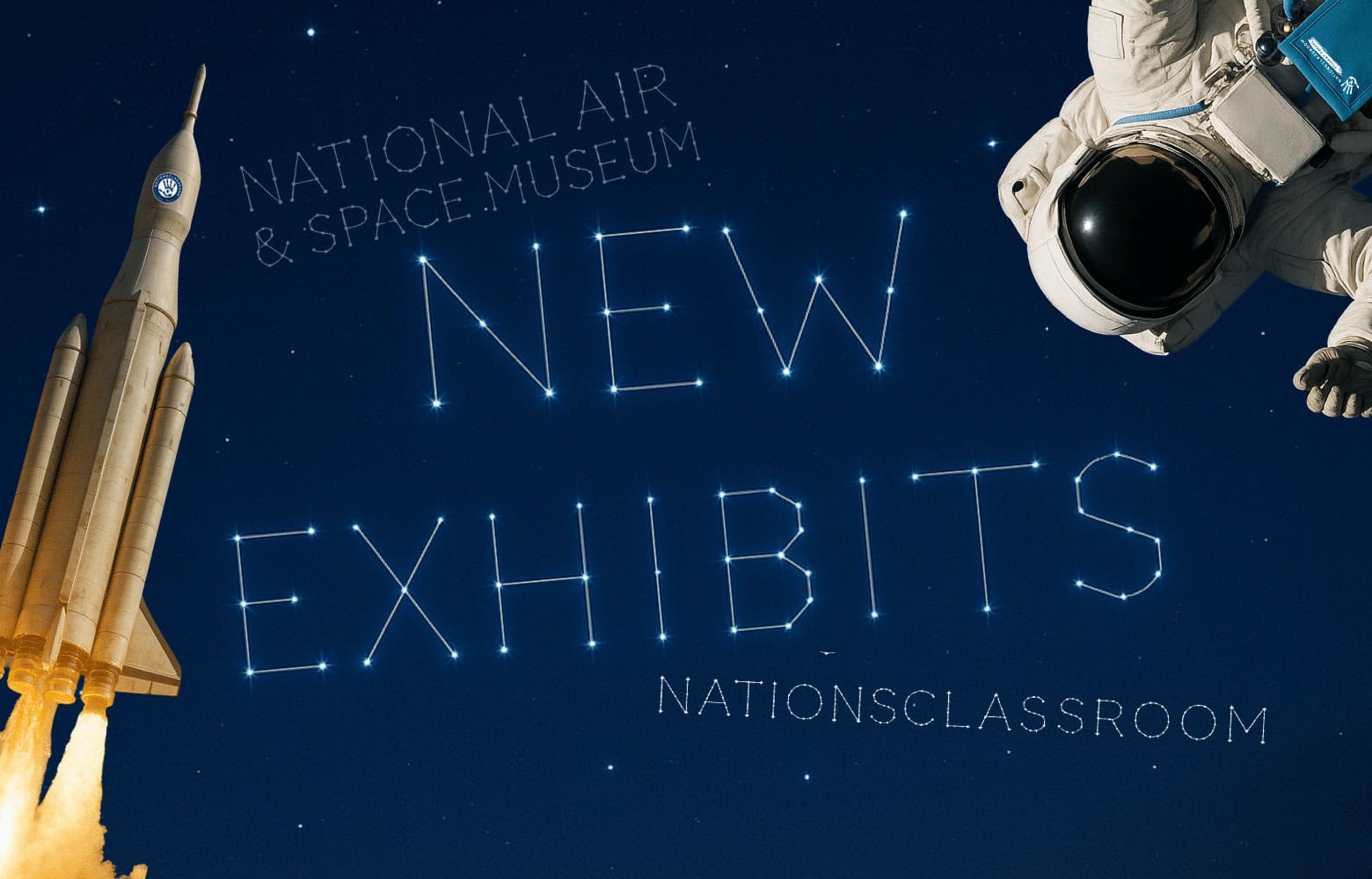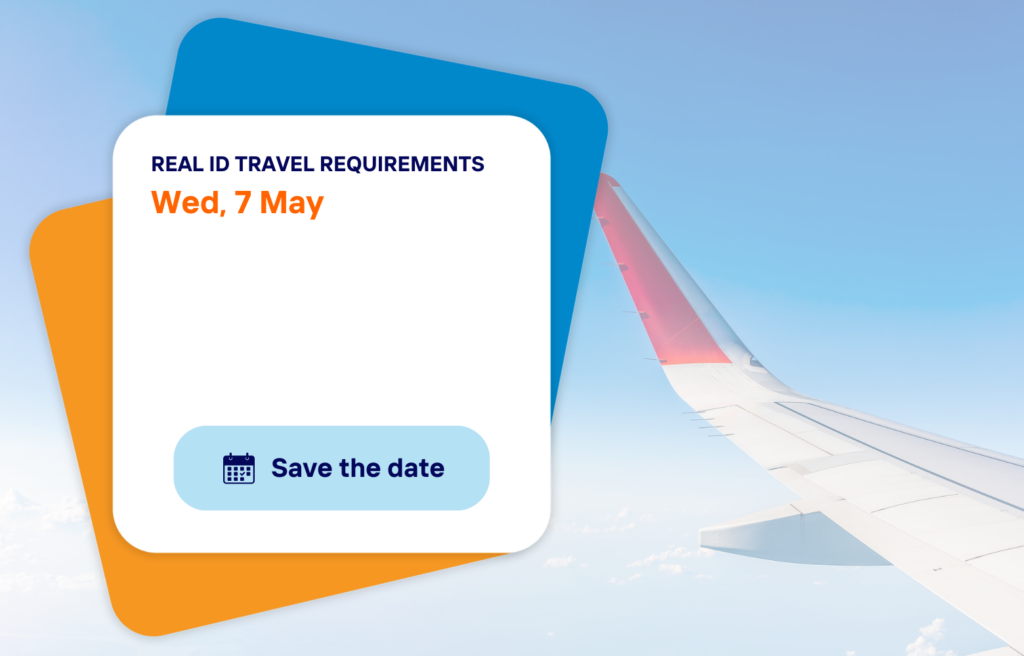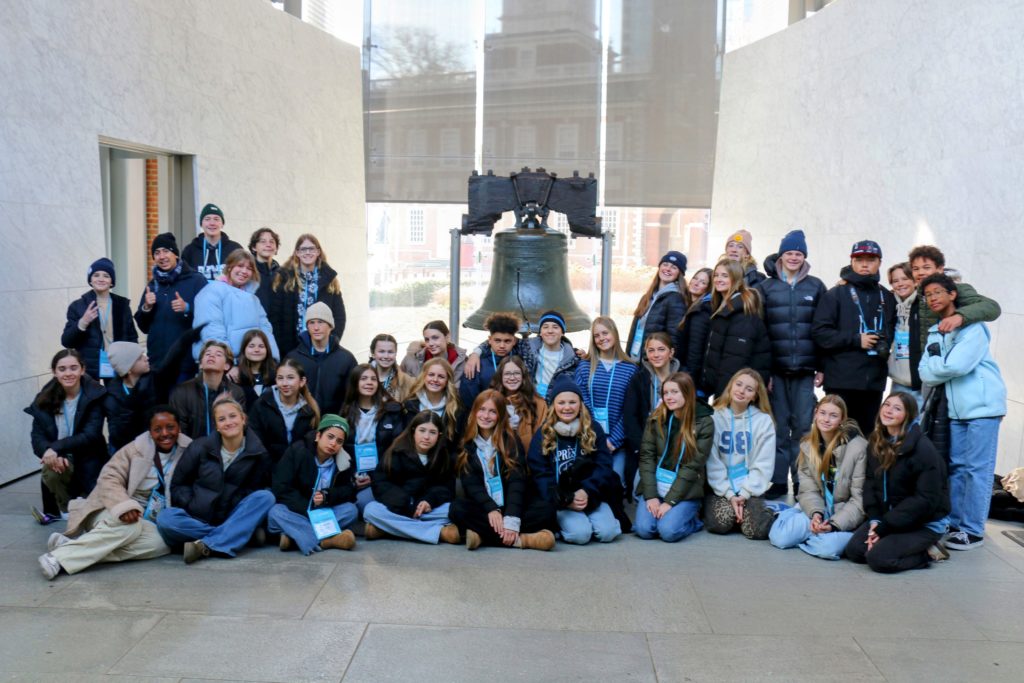5 New Must-See Exhibits at the National Air and Space Museum

What do a touchable moon rock, a trench periscope, and an asteroid-mining debate game have in common?
They’re all part of the five brand-new exhibits unveiled at the National Air and Space Museum this year. Each one is designed to draw students in with hands-on exhibits, powerful storytelling, and big questions about where we’ve been and where we’re headed.
It’s the kind of museum experience that invites students to explore, imagine, and see their place in the story. Take a closer look:
1. Boeing Milestones of Flight Hall
The updated Boeing Milestones of Flight Hall is the first exhibit students will see when they enter the museum, and it sets the stage for everything that follows. Inside, they can stand beneath the Spirit of St. Louis, get a close look at the Apollo 11 Command Module Columbia, and see the Bell X‑1, the rocket plane Chuck Yeager flew faster than the speed of sound.
The gallery also features the Mercury Friendship 7 capsule flown by John Glenn, the early Telstar satellite, and a pulsar map etched into the floor that scientists once imagined could guide future space travelers home.
One of the most memorable moments for students is the opportunity to touch an actual moon rock brought back by the Apollo 17 crew.
All in all, this gallery is a celebration of milestones, inventions, and fearless exploration. It introduces students to the people and moments that helped launch the modern age of flight and space travel.
2. Barron Hilton Pioneers of Flight Gallery
The Pioneers of Flight exhibit showcases the people who chased the sky when aviation was still a thrilling risk. Visitors will meet names they know, like Amelia Earhart, whose bright red Lockheed Vega 5B is on display, and Charles Lindbergh, whose historic Spirit of St. Louis hangs just overhead.
But the space also highlights lesser-known trailblazers: Bessie Coleman, the first Black and Native American woman to earn a pilot’s license, and the Tuntland brothers, young innovators who built their own gliders.
The exhibit also includes a hands-on hangar space where younger visitors can climb into a mini plane, tinker with controls, and imagine where their flights might take them.
3. World War I: The Birth of Military Aviation
This immersive exhibit gives students a vivid look at how airplanes transformed the battlefield during World War I. Overhead, vintage biplanes and fighter aircraft appear frozen in mid-flight. Around the room, displays of uniforms, journals, photos, and equipment help tell the story of life during the war, both in the air and in the trenches.
One of the highlights is a replica trench experience, where students can look through periscopes and face interactive challenges that mirror real wartime decisions. The exhibit also highlights the achievements of the first African American combat pilots, as well as the stories of international aviators who flew under dangerous and often overlooked circumstances.
This is a powerful, hands-on look at a turning point in both aviation and world history. It connects well with lessons in social studies, science, and technology, helping students understand how innovation and conflict have long shaped one another.
4. Futures in Space
If there’s one space that captures the imagination of tomorrow, it’s this one. Futures in Space blends science fiction with real-life innovation to get students thinking critically about our next steps as a spacefaring species.
On display: a full-scale mock-up of Blue Origin’s crew capsule, interactive features that explain how Falcon 9 grid fins work, and even a full-size R2‑D2 used in the Star Wars films.
Visitors are also invited to explore the ethics of space expansion through hands-on games and exhibits. One asks: Should we mine asteroids for rare materials or focus our efforts on sustainability here on Earth? Another challenges visitors to create a profitable (and ethical) plan for colonizing space.
The result is a gallery that encourages students to think not only like engineers and astronauts, but like mindful citizens of the universe.
5. Allan and Shelley Holt Innovations Gallery
This rotating exhibit highlights how aerospace technology is evolving to meet the challenges of a changing planet. The first featured exhibit, Aerospace and Our Changing Environment, explores the connection between flight and climate.
Students can examine early solar-powered technology, learn how engineers are developing hydrogen-powered aircraft, and interact with displays that show how aviation affects things like weather systems, air quality, and energy use.
It’s a forward-thinking exhibit that brings together science, environmental studies, and engineering in a way that’s hands-on and accessible. With new exhibits rotating every few years, the gallery stays fresh and continues to explore how innovation can shape a more sustainable future.
Why This Is a Big Deal for School Trips
For educators planning a trip to Washington, D.C., these new galleries create opportunities for students to think, explore, and connect in ways that last long after they leave.
Here’s what makes this experience so valuable:
- Interactive learning: Each gallery invites students to engage through flight simulators, touchable artifacts, digital games, and real-world scenarios. These experiences help turn observation into true understanding.
- Engagement for every kind of learner: History buffs, science lovers, creative thinkers, and hands-on problem solvers will all find something that speaks to them.
- Representation that matters: The exhibits highlight a wide range of voices, including women aviators, Black pilots, Indigenous leaders, and innovators from around the world. Students walk away with a fuller, more honest view of who helped shape the skies.
Ready to Bring Your Students to the Air and Space Museum?
We’ve helped teachers plan meaningful Washington, D.C. trips for over 20 years, and the National Air and Space Museum continues to be one of the most popular and rewarding stops for student groups.
Our team can help you choose exhibits that support your curriculum, create a timeline that works for your group, and take care of every detail, from transportation and hotels to meals and scheduling.
We know what it takes to make a school trip successful because we’ve walked in your shoes.
Explore our Washington, D.C. trips or book a quick call with one of our student travel experts to get started.



